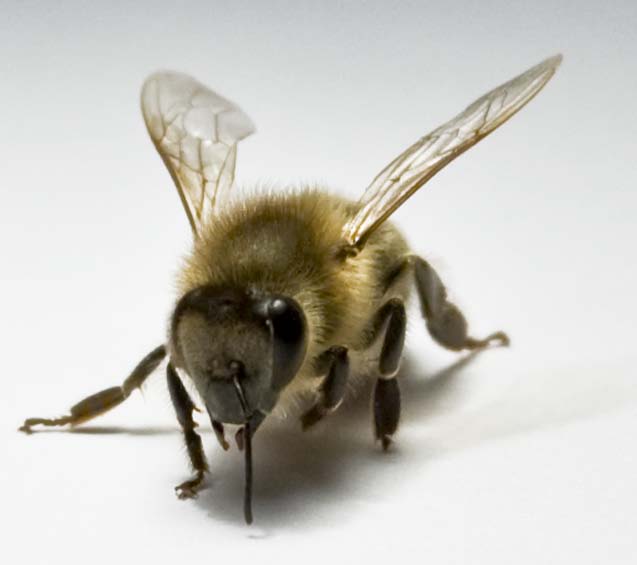Antenna Antics: Honeybees Are 'Righties'

When bees are forced to interact with only their left antennas, they have trouble bee-having: Just as humans shake with their right hands, bees also greet each other by predominantly using their right antennas.
A new study found that when pairs of bees interact solely with their right antennas, they approach each other and begin interacting more quickly, and relate more positively to each other — for instance by extending their tongue, or proboscis. When they interact only with their left antennas, on the other hand, they are much more likely to respond negatively, arching their body into a C-shape so that their stingers and mandibles are pointed at the other bees, the study found.
Favoring the right
What does it mean? The findings suggest that bees prefer to use their right antennas in social situations to better relate to one another and to pick up on certain "social cues," said Giorgio Vallortigara, a researcher at Italy's University of Trento. [In Photos: Honeybee Scouts Find Food]
To conduct the research, the results of which were published today (June 27) in the journal Scientific Reports, the scientists first randomly cut off a honeybee's right or left antenna. They then placed pairs of bees into a small container and filmed their interactions.
Surprisingly, bees with only their right antenna behaved almost identically to those with both antennas intact, the researchers found. Both groups were more likely to behave aggressively toward bees from another colony, for example. But bees with only the left antenna appeared unable to distinguish between bees from their own colony and those from an unfamiliar one, according to the study.
Remarkable abilities
Sign up for the Live Science daily newsletter now
Get the world’s most fascinating discoveries delivered straight to your inbox.
This is just the latest finding to hint at the remarkable abilities of honeybees, which have brains that contain only 960,000 neurons (compared with about 86 billion neurons in an average human brain). In addition, honeybees can recognize human faces, navigate complex mazes and teach each other where to find food by dancing (have fun trying that one at the next club you visit!).
The study suggests that the bees' brains are wired asymmetrically, as are human brains.
"Until quite recently neuroscientists believed that brain asymmetry and lateralization of function" — meaning the left and right sides of the body do different things — "was a uniquely human phenomenon, associated with language and higher mental functions," Vallortigara told LiveScience. But in the last 20 years, however, research has shown this "asymmetry of function" in many different animals from mammals to reptiles and fish, he added. And now honeybees.
"The result is interesting, as it provides provocative information to suggest that there might be lateralization in the bee brain, as there is in vertebrate brains," said Gene Robinson, a researcher at the University of Illinois at Urbana-Champaign, who wasn't involved in the study.
Both humans' right-handedness and honeybees' right-antenna-preference are byproducts of asymmetries in the brain, meaning the left and right side of the brain do different things, Vallortigara said. This asymmetry could have evolved in vastly different animals due to similar evolutionary struggles to survive (finding food and a mate, for instance), or perhaps "they are linked in some more direct way at the genetic level," Vallortigara said. "We do not know as of yet."
Email Douglas Main or follow him on Twitter or Google+. Follow us @livescience, Facebook or Google+. Article originally on LiveScience.com.










